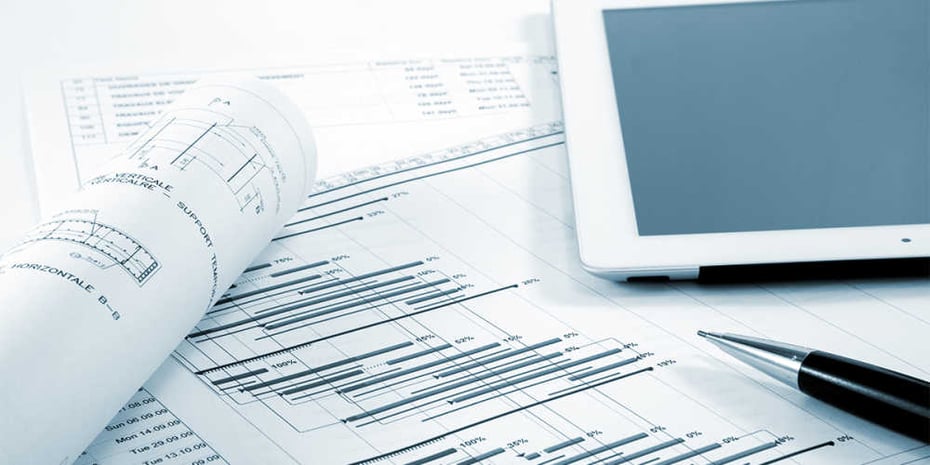Optimizing Job Collaboration: Engineer's Finest Practices in Building File Management
In the detailed world of architectural projects, the efficient monitoring of building records stands as a foundation for success. Architects, with their careful attention to information and ingenious design options, are tasked with managing a harmony of timelines, resources, and stakeholders. Amidst this intricacy exists an essential concern: just how can engineers streamline partnership procedures to boost project outcomes? By checking out crucial approaches such as leveraging cloud-based platforms, establishing robust interaction methods, and making certain data safety, engineers can boost their document management practices to new heights.
Leveraging Cloud-Based Platforms
By transitioning from conventional paper-based systems to cloud remedies, designers can streamline cooperation, enhance record availability, and improve overall project performance. This availability promotes smooth interaction and sychronisation among job stakeholders, leading to fewer mistakes and hold-ups in the construction procedure.
Additionally, cloud-based platforms give a safe environment for saving sensitive project info, providing security, routine backups, and customer consent setups to safeguard information integrity. Designers can also profit from the scalability of cloud services, permitting them to change storage space capacity and capability based upon project demands. On the whole, leveraging cloud-based platforms empowers designers to maximize their construction paper monitoring processes, driving higher cooperation, efficiency, and success in their projects.
Carrying Out Variation Control Equipment
Having actually established the benefits of cloud-based platforms in building paper monitoring, architects can now enhance their file control procedures by applying Variation Control Systems. Version Control Solution (VCS) are necessary tools that track modifications in records, guaranteeing that group participants are always dealing with the most recent and most accurate information. By applying VCS, architects can preserve a central database where all project files are kept, allowing seamless partnership while decreasing the risk of errors and version disputes.
This feature is specifically useful in construction tasks where design models and modifications are usual. This transparency not just enhances liability however also assists in dealing with disputes or inconsistencies that might develop during the task lifecycle.
Establishing Interaction Procedures
To make certain efficient and efficient job sychronisation, engineers must establish clear and robust communication procedures within their building and construction record monitoring procedures. This system can be a task monitoring software, e-mail threads, or cloud-based storage services.
Furthermore, communication protocols ought to also include guidelines on just how to take care of disputes, modification orders, and urgent concerns that may arise throughout the job lifecycle. Establishing an organized technique to communication ensures that all stakeholders get on the exact same page, advertises transparency, and ultimately adds to the effective completion of the construction task.
Using BIM Software for Control
BIM software application plays a pivotal duty in improving coordination amongst project group members moved here in the construction sector. Building Information Modeling (BIM) promotes cooperation by offering a central check this platform where architects, designers, service providers, and various other stakeholders can collaborate in a collaborated manner. Via BIM software program, project individuals can access and upgrade a shared version which contains thorough information regarding the structure design, building and construction components, and job timetables.

Moreover, BIM software enables real-time cooperation and interaction amongst group participants, despite their physical location. Via cloud-based BIM platforms, job stakeholders can access the most up to date project information, track changes, and make informed choices quickly. Overall, leveraging BIM software application for coordination improves project effectiveness, productivity, and eventually leads to effective project results.
Ensuring Information Safety and Conformity
In the realm of building and construction file monitoring, protecting information honesty and guaranteeing governing compliance are vital factors to consider for architects and various other task stakeholders. Architects need to apply robust safety measures to secure delicate project info from unapproved access or breaches. Making use of protected cloud storage space services with security procedures and gain access to controls can aid reduce threats associated with information theft or loss. Consistently updating software program and systems, conducting safety audits, and he has a good point giving staff training on data protection best practices are necessary actions in keeping a secure environment for construction file administration.

Verdict
In final thought, architects can enhance task partnership in building and construction file monitoring by leveraging cloud-based platforms, carrying out variation control systems, establishing interaction methods, utilizing BIM software program for coordination, and guaranteeing information security and compliance. These ideal techniques help enhance the construction process, enhance interaction amongst project stakeholders, and boost efficiency in job distribution. By adhering to these guidelines, designers can successfully take care of construction files and assist in effective task end results.
Through BIM software, job individuals can access and upgrade a common version that has detailed information about the building design, building elements, and job routines.
Via cloud-based BIM systems, task stakeholders can access the most recent task details, track adjustments, and make educated choices immediately - construction document management. On the whole, leveraging BIM software program for control improves job effectiveness, efficiency, and eventually leads to successful project end results
In verdict, engineers can enhance job partnership in construction file management by leveraging cloud-based systems, applying variation control systems, establishing communication protocols, making use of BIM software program for sychronisation, and guaranteeing data security and conformity. These ideal methods assist streamline the building and construction procedure, enhance communication amongst job stakeholders, and enhance performance in job delivery.